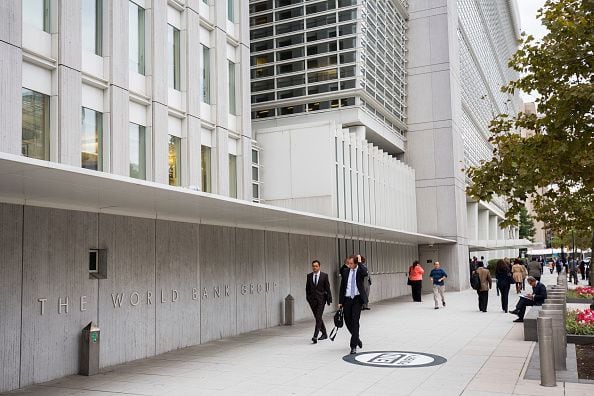
He world Bank aims to accelerate the disbursement of loans by a third in just two years, a key pillar of a review that aims to make the development organization more effective.
“We haven’t set an exact date, but we will try to reduce (delivery times) by a third in maybe a couple of years.”said Ed Mountfield, vice president of Operations Policy and Country Services at the World Bank, in an interview in London.
“We have to find a way to go faster, reviewing our own bureaucracy and recognizing that delays often occur on the customer side,” Mountfield said Wednesday, referring to countries with low institutional capacity.
Currently, disbursements take an average of 27 months from when the bank receives a loan application.
Mountfield said the lender does not intend to radically change its current rules, but acknowledged that processes could be faster in cases where operational risk is lower.
“When we face much higher risks, for example in a large hydroelectric investment, then of course we will have a higher level of attention,” he added. “It’s not about cutting standards, we have to achieve quality and speed at the same time.”
Adding resources to the execution phase of bank-backed projects is another way to reduce disbursement times, Mountfield said. “We need more practical support for borrowers in a lower capacity environment to get results quickly.”
The World Bank has launched a broader reform process that includes expanding its balance sheet as international threats, from geopolitical tensions to global warming, pile up pressure on vulnerable nations.
The United States, the World Bank’s largest shareholder, has been urging the institution for months to take bolder and faster measures to free up resources.
Reforming the World Bank’s approach to risk could unlock nearly $190 billion in additional loans that developing countries urgently need without jeopardizing their AAA credit rating, according to a study commissioned by the Rockefeller Foundation.
The study, carried out by the international financial analysis company Risk Control, concludes that the two main credit arms of the WB, the International Bank for Reconstruction and Development and the International Development Association, have a “significant room for maneuver” to increase loans.
The World Bank is now pushing for more grants and capital from member countries, while leveraging its balance sheet to increase lending to respond to climate change and other global crises, such as pandemics and fragile states. .
In April, the institution reduced its capital-to-loan ratio to increase lending by $50 billion over 10 years, but annual climate transition financing needs alone are estimated to be $3 trillion for emerging markets. and low-income economies by 2030.
“We will ask our shareholders to increase their commitments,” Mountfield said.
Source: Reuters
Source: Gestion
Ricardo is a renowned author and journalist, known for his exceptional writing on top-news stories. He currently works as a writer at the 247 News Agency, where he is known for his ability to deliver breaking news and insightful analysis on the most pressing issues of the day.












